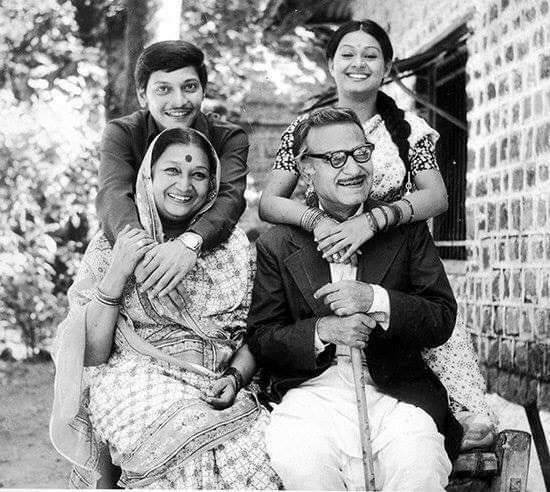Reflecting on a still from Basu Chatterjee's "Chitchor" (1976), featuring Dina Pathak, A.K. Hangal, Amol Palekar, and Zarina Wahab, evokes a myriad of emotions and thoughts.
Reflecting on a still from Basu Chatterjee's "Chitchor" (1976), featuring Dina Pathak, A.K. Hangal, Amol Palekar, and Zarina Wahab, evokes a myriad of emotions and thoughts. This film, emblematic of Chatterjee's oeuvre, stands as a testament to the beauty of simplicity and the profundity of everyday life. The still captures more than just a moment in cinema; it encapsulates the essence of an era that cherished subtle storytelling over grandiose spectacle.
Basu Chatterjee’s filmmaking style, often described as the cinema of the common man, brought to life the nuances of middle-class India with its dreams, dilemmas, and simple joys. In "Chitchor", he weaves a narrative that is deceptively simple yet layered with complexities of human emotions and relationships. The characters portrayed by Dina Pathak, A.K. Hangal, Amol Palekar, and Zarina Wahab become everyman figures, their experiences resonating with viewers across generations.
Dina Pathak and A.K. Hangal, with their seasoned performances, bring depth to the narrative, embodying the wisdom and resilience of older generations. They are the anchors in the story, providing a moral and emotional compass to the younger characters. Amol Palekar and Zarina Wahab, through their nuanced portrayals, capture the innocence and earnestness of love that is unmarred by the cynicism of modernity. Their on-screen chemistry is a gentle reminder of the enduring appeal of love stories that are grounded in reality, rather than fantasy.
The film, through its portrayal of everyday life, celebrates the beauty of the mundane. Chatterjee's directorial vision encourages viewers to find joy in the simple moments – a conversation, a glance, a walk in the rain. This simplicity in storytelling is a stark contrast to the spectacle-driven narratives that dominate modern cinema, making "Chitchor" a refreshing departure.
Moreover, the still from the film symbolizes the intersection of tradition and modernity, a recurring theme in Chatterjee’s films. It questions and often blurs the lines between the old and the new, urging viewers to ponder the true essence of progress and happiness. Through the lives of its characters, "Chitchor" explores the values of understanding, patience, and the importance of listening to one’s heart, messages that remain relevant even in today’s fast-paced world.
This still from "Chitchor" is not just a frozen moment in cinematic time; it is a mirror reflecting the enduring human condition. Basu Chatterjee’s masterpiece, through its simplicity and depth, invites viewers to pause and reflect on the beauty of life’s simple pleasures, the complexity of human relationships, and the timeless nature of love. It is a poignant reminder that sometimes, in our pursuit of happiness, we need not look further than the ordinary moments that make life extraordinary.


